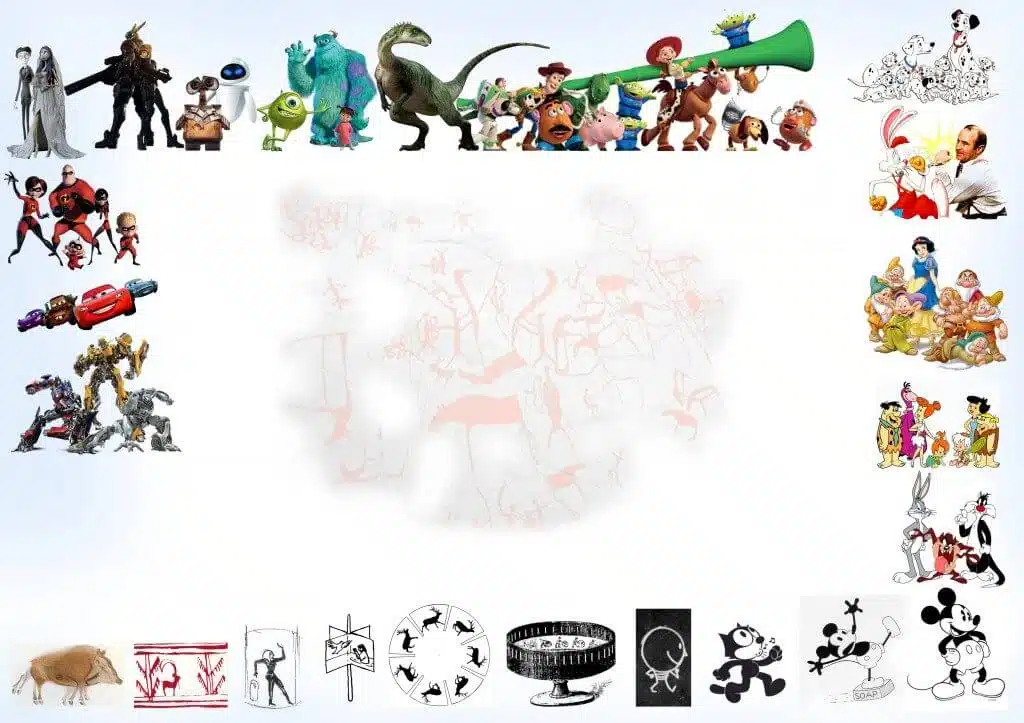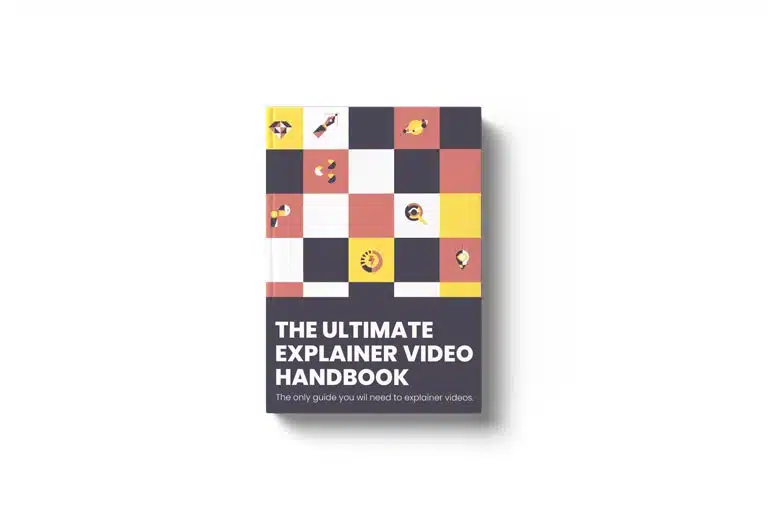Last Updated on November 7, 2024
Article Contents
History of Animation: An Opening Door to the World of Animations
Animation is one of the most dynamic and transformative art forms, bringing stories, characters, and worlds to life. The history of animation showcases the evolution of technology, creativity, and storytelling that has shaped the medium into what we know today. From its early beginnings to its role in modern cinema, animation has opened doors to endless possibilities. This journey through animation history reveals how far we’ve come and where we might be headed next.
The Fascinating History of Animation
Animation didn’t start with Disney or Pixar; it’s a form of expression as old as human civilization. Early humans sought to depict movement and emotion through images, laying the groundwork for what we now know as animation. From rudimentary storytelling methods to advanced computer-generated imagery, the history of animation has always been driven by our need to communicate visually and artistically.
Prehistoric Origin of Animation
The origins of animation history can be traced back to ancient times, long before modern technology existed. Archaeological findings reveal that early humans had a keen interest in depicting movement, as seen in various cave paintings worldwide. These paintings, such as those found in the Lascaux caves in France, often show animals with multiple legs in different positions, suggesting an early attempt to represent motion. These ancient artists weren’t just creating for aesthetic purposes—they were visual storytellers, capturing scenes from daily life, hunting rituals, and the world around them.
Some of the oldest examples of sequential art, which can be seen as a precursor to animation, include the following points:
- Chauvet Cave Paintings (France): These 30,000-year-old cave paintings depict animals in sequential poses, similar to frames in animation, suggesting that early humans may have been experimenting with portraying movement even then.
- Egyptian Burial Art: Ancient Egyptians created burial murals dating back to around 2000 BCE that showed people and animals in different poses along a wall, sequentially narrating scenes of hunting, dancing, and daily activities. This sequential art format hints at a primitive form of storytelling that resembles animation.
- Greek Pottery: Ancient Greek vases and pottery from around 500 BCE often feature repeated images of athletes, warriors, or mythological creatures in slightly different poses around the vase. When viewed sequentially, these images convey movement, much like a flipbook, and illustrate an early understanding of depicting action in art.
- Shahr-e Sukhteh “Burnt City” Goblet (Iran): This 5,200-year-old artifact features five images of a goat jumping to eat from a tree. When spun in a circle, these images give the illusion of movement, making it one of the earliest known examples of sequential art in an animated form.
- Bronze Age Clay Discs (Iran): Archaeologists have discovered clay discs with animal figures arranged in sequence, dated back to around 3000 BCE. These early discs can be thought of as ancient “zoetropes,” representing some of the first attempts to create movement through a series of images.
These early artistic expressions reflect humanity’s innate desire to capture and understand motion. These weren’t mere decorations but storytelling tools—the first steps toward what would eventually become the art of animation history. By expressing movement in static art, these early humans were creating visual narratives, laying the groundwork for storytelling through motion that would later evolve into animation as we know it today.
The desire to tell stories through animated images has been a powerful force in human creativity, showing that even in prehistoric times, people were driven to bring their experiences and observations to life.
Early Animation Devices
Long before modern technology, inventors were already experimenting with devices to create the illusion of motion. The Magic Lantern, one of the earliest forms of projected storytelling, dates back to the 15th century. This device used a concave mirror to project images painted on glass slides onto a wall or screen, creating an illusion of movement as the slides were changed rapidly.
Following the Magic Lantern, several devices developed in the 19th century laid the foundation for animation as we know it:
- Thaumatrope (1820s): A disk with different images on each side that, when spun, appeared to blend into one image. This simple invention was one of the first tools to visually blend images through motion.
- Phenakistoscope (1831): A spinning disk that created the illusion of movement through a series of sequential images. As the disk spun, viewers saw a short, continuous loop of motion.
- Zoetrope (1834): A cylindrical device with images on the inside surface, which created a moving image effect as the cylinder spun. The Zoetrope allowed for more complex animations, making it a significant step forward in animation history.
The Birth of Modern Animation
The late 19th century saw the invention of the first Flipbook, patented by John Barnes Linnett in 1868. Known as the Kineograph, this flipbook allowed people to flip through images rapidly to create an illusion of movement. The Flipbook was groundbreaking, as it demonstrated how static images could be transformed into moving pictures. This was a crucial step in animation history, bridging the gap between simple optical devices and modern animation techniques.
The Traditional and Silent Era
The 1900s marked the beginning of the traditional animation era, where animations were created by drawing each frame by hand. Pioneers like Winsor McCay, who produced the animated film Gertie the Dinosaur in 1914, paved the way for the industry. This era also marked the start of silent animated films, where storytelling relied solely on visuals. By 1928, Walt Disney’s Steamboat Willie became the first synchronized sound animation, revolutionizing the medium and ushering in a new age of animated storytelling.
The Golden Age of Animation
The 1930s to 1950s is often referred to as the Golden Age of Animation. Studios like Disney, Warner Bros., and MGM transformed animation into a leading form of entertainment. Disney’s Snow White and the Seven Dwarfs (1937), the first full-length animated feature, set new standards for storytelling and production quality. This period saw a tremendous technological advancement in animation, from refined character animation techniques to color films. The history of animation timeline shows this as a peak period that solidified animation’s place in popular culture.
Understanding the Timeline of Animation
The history of animation timeline is a fascinating journey through innovation and creativity. Here’s a brief look at some pivotal years:
- 15th Century: Introduction of the Magic Lantern
- 1820s: Creation of the Thaumatrope
- 1831: Development of the Phenakistoscope
- 1834: Invention of the Zoetrope
- 1868: Patent of the first Flipbook (Kineograph)
- 1908: Release of Fantasmagorie, one of the first fully animated films
- 1928: Disney’s Steamboat Willie introduces synchronized sound in animation
- 1937: Disney’s Snow White and the Seven Dwarfs, the first full-length animated feature
- 1951: Color television is introduced in the U.S., expanding the reach of animated series
- 1980s-1990s: Growth of computer-generated imagery (CGI) in animation
- 1995: Release of Pixar’s Toy Story, the first fully CGI animated feature film
This timeline serves as a quick reference for significant events and advancements in animation history.
What Is the History of Computer Animation?
Computer animation began in the 1960s and became a transformative force in the industry. Early computer animation was limited due to technology constraints, but the 1980s saw significant advancements in CGI. Pixar’s Toy Story (1995), the first fully computer-animated feature film, was a milestone that revolutionized the history of animation. Today, computer animation allows for highly detailed and realistic visuals, expanding storytelling possibilities and influencing all forms of media.
The Television Era
The introduction of color television in the 1950s brought animated content directly into people’s homes. Classic cartoons like The Flintstones (1960) and Scooby-Doo (1969) became household favorites, solidifying animation as a core component of television programming. The history of animation during this era shows how television helped animation reach a wider audience, making it accessible to families across the globe.
A Time-Traveling Conclusion
The journey through the history of animation is a testament to human creativity and innovation. From prehistoric cave paintings to CGI-dominated blockbusters, each era has pushed the boundaries of what’s possible. Animation continues to evolve, embracing new technologies and storytelling methods that keep audiences captivated. The animation history we see today is built on centuries of creativity, with an exciting future that promises even more groundbreaking developments.
FAQs Related to the History of Animation
Who created animation?
The concept of animation has evolved over centuries, with numerous inventors and artists contributing to its development. However, Émile Cohl is often credited with creating one of the first fully animated films, Fantasmagorie, in 1908.
What was the first animation?
The first animation is often attributed to Émile Cohl’s Fantasmagorie in 1908. This silent, hand-drawn short film is considered one of the earliest examples of modern animation.
When was the first animation made?
The first animation as we know it was made in 1908 with Fantasmagorie. However, earlier devices like the Zoetrope and Phenakistoscope in the 1800s laid the groundwork for moving images.
When was the first cartoon made?
The first cartoon, Gertie the Dinosaur by Winsor McCay, debuted in 1914. It introduced animated characters with personality, marking a significant milestone in animation history. Animation has truly opened doors to new worlds, making it one of the most engaging forms of artistic expression. The history of animation showcases how the medium has evolved and its endless potential for creativity and storytelling. With each new technological advance, animation continues to break new ground, capturing the imagination of audiences around the globe.

